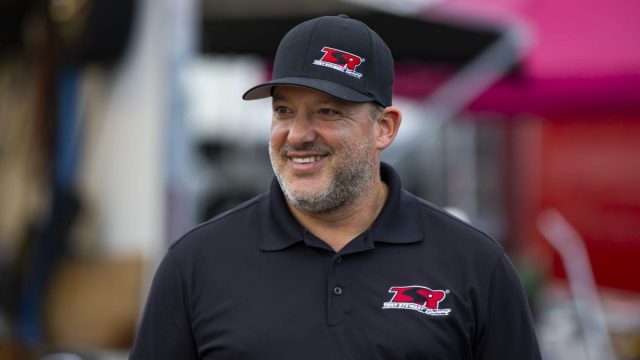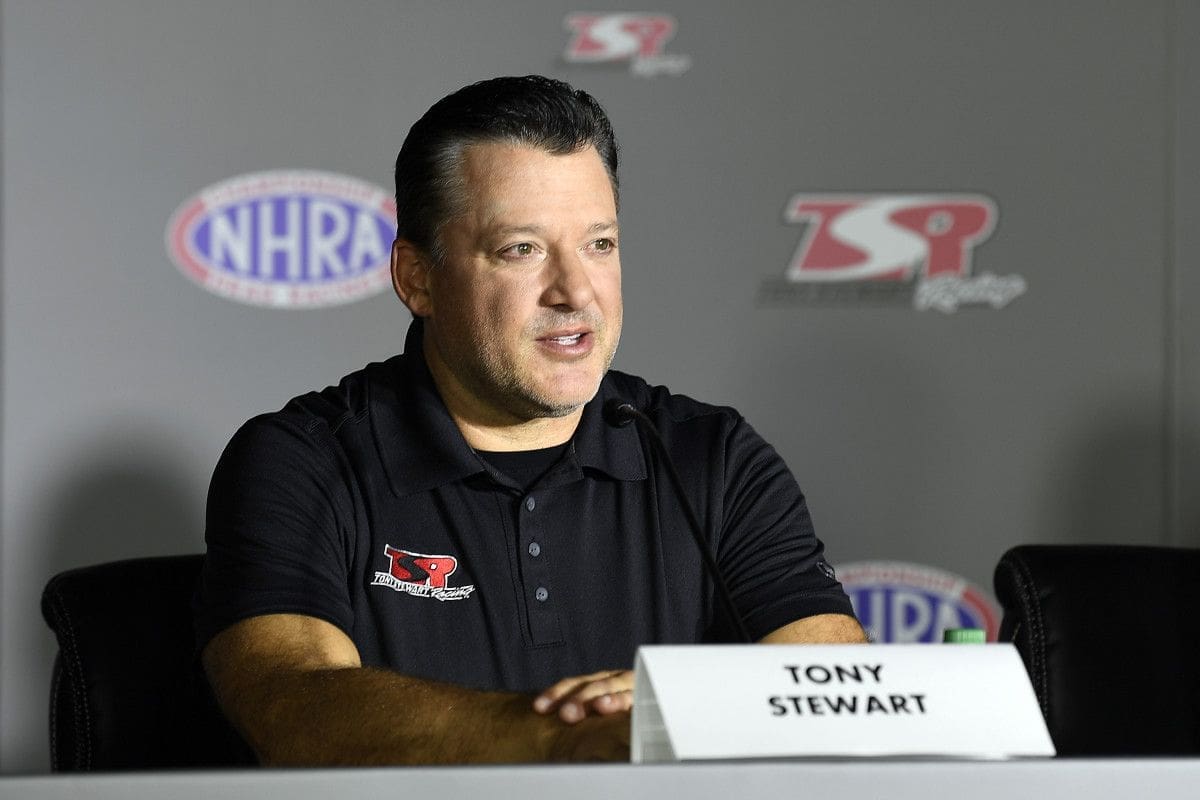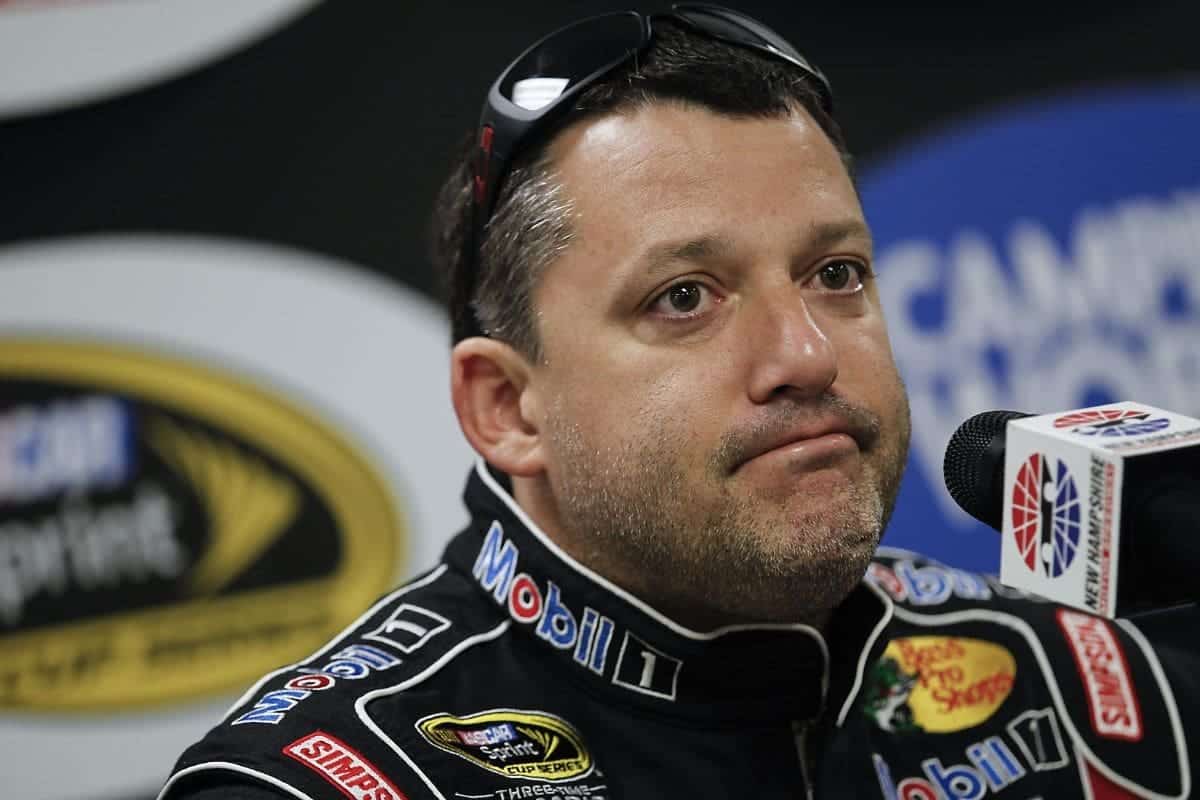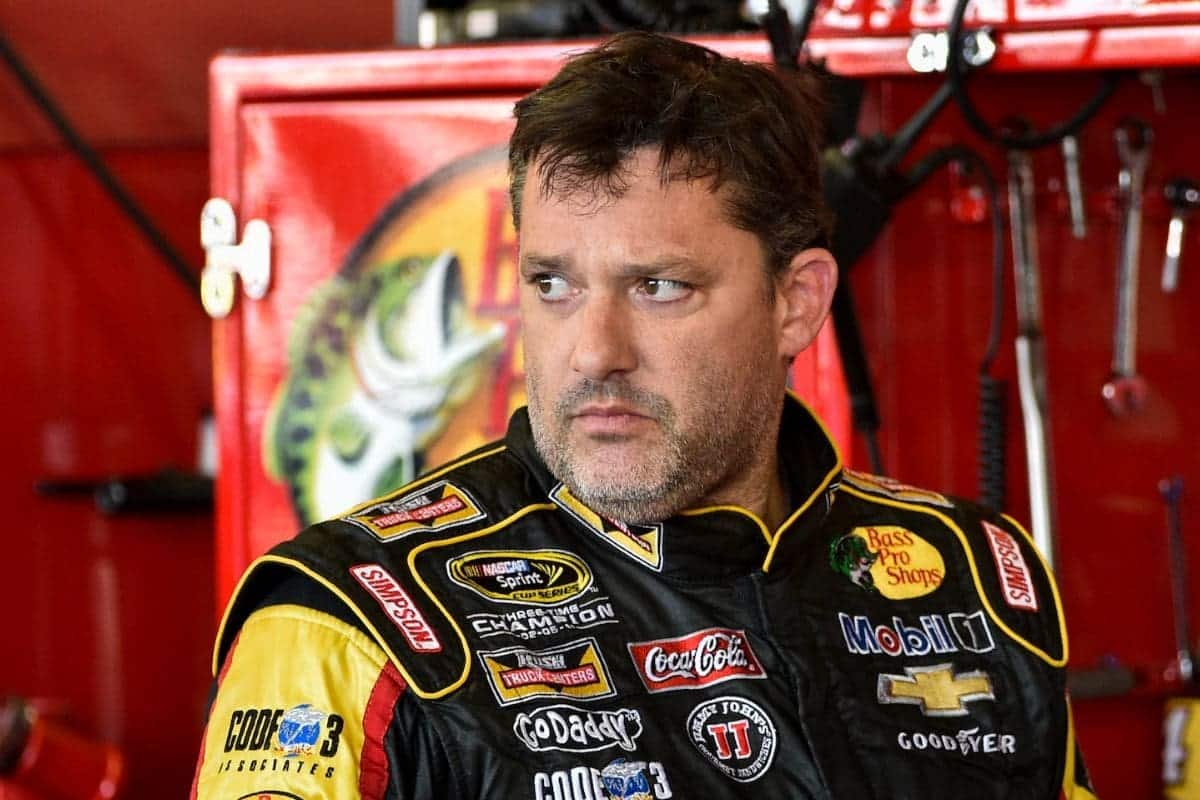Tony Stewart Rejected Joe Gibbs for Gene Haas: Tony Stewart‘s decision to leave Joe Gibbs Racing in 2008 and align with Gene Haas to form Stewart-Haas Racing was a crucial moment in NASCAR history, driven by Stewart’s desire for greater autonomy and influence over team operations. This move not only signified a dramatic shift in Stewart’s career, but also highlighted his ambition to mold a team that echoed his competitive spirit and strategic vision. Exploring the underlying factors behind Stewart’s departure reveals a complex interplay of professional aspirations and personal motivations, raising questions about the future of Stewart-Haas Racing and its evolving leadership dynamics.
Key Highlights
- Tony Stewart sought greater control over his career by becoming a team owner with a 50% stake in Stewart-Haas Racing.
- Stewart’s partnership with Gene Haas allowed him to shape a NASCAR team according to his competitive vision.
- The opportunity to lead and manage his own team drove Stewart’s decision to leave Joe Gibbs Racing.
- Stewart aimed to turn around Gene Haas’s struggling team, using his racing expertise and strategic hires.
- The new partnership offered Stewart a platform to implement technological innovations and driver development programs.
Tony Stewart’s Departure from JGR (2008)
Tony Stewart’s exit from Joe Gibbs Racing in 2008, after securing two championships and numerous victories, signaled a significant shift in his career and in NASCAR. Stewart, a formidable presence on the track, had become synonymous with Joe Gibbs Racing, etching his name into NASCAR records with championship wins in 2002 and 2005. His departure was not merely a professional shift but a touching chapter that left an indelible mark on the sport.
The decision to part ways was laden with speculation and emotional weight. During his tenure at Joe Gibbs Racing, Stewart amassed an impressive record that solidified his status as one of the elite drivers in NASCAR. His exit, hence, was not just about seeking new opportunities but also a reflection of a deeper, strategic pivot in his career.
The Ford 400 in 2008 was a moment of somber reflection as Stewart took his final laps with the team, resulting in a tearful farewell. Handing over his car to rookie Joey Logano symbolized the end of an era, marking an end to a partnership that had seen victory and challenge.
Beginning of Stewart-Haas Racing
The beginning and subsequent growth of Stewart-Haas Racing (SHR) marked a crucial period in NASCAR, embodying a strategic realignment driven by financial imperatives and the collaborative synergy between Gene Haas and Tony Stewart.
Established in 2008, SHR emerged from the convergence of Stewart’s racing expertise and Haas’s existing but struggling Haas CNC Racing operation. This partnership was not merely a merger of assets but a confluence of complementary strengths that redefined their NASCAR adventure.
Tony Stewart’s role as a co-owner infused new life into the team. His decision to negotiate a 50% ownership stake was a brilliant move, allowing him to wield influence over operational and strategic decisions while continuing his amazing driving career. This dual role was indicative of Stewart’s deep-seated passion for the sport and his desire to shape the future of his team directly.
The evolution of SHR was marked by strategic hires, significant investments in technology, and a relentless pursuit of competitive excellence. Stewart’s leadership, combined with Haas’s financial support, facilitated a rapid ascension in the NASCAR ranks. The team’s initial major breakthrough came in 2011 when Stewart clinched the NASCAR Cup Series championship, affirming the potential of this dynamic partnership.
Over the years, SHR expanded its roster, incorporating top-tier drivers and securing high-profile sponsorships. This growth trajectory was supported by a commitment to innovation and a culture of relentless pursuit of performance.
Reasons for Stewart’s Departure from JGR
Stewart’s departure from Joe Gibbs Racing was sparked by the unprecedented opportunity to evolve from a driver to a team owner, a move that promised greater control over his racing career and a direct influence on team operations. This crucial shift was not merely a reaction to Joe Gibbs Racing’s switch to Toyota in 2007, as widely speculated. Instead, Stewart’s decision was fundamentally rooted in his aspiration to embrace a more all-encompassing role within the sport, one that extended beyond the cockpit.
“I did a year with Gibbs when they switched to Toyota. I had nothing against him [ Joe Gibbs] and I learned a lot from him about management, but an ownership opportunity doesn’t come along too often. Also, I wasn’t ready to retire as a driver – I mean I raced another seven years after the deal with Gene Haas.” – (Stewart)
Tony Stewart recognized that the opportunity to partner with Gene Haas and form Stewart-Haas Racing presented a unique chance to shape the future of a NASCAR team according to his vision. The allure of potentially transforming a mid-tier team into a formidable contender was a challenge that resonated with Stewart’s competitive nature. This was more than a professional shift; it was a strategic move to utilize his extensive racing experience in team management and operations.
While the transformation entailed significant responsibilities, including financial and administrative burdens, Stewart’s steadfast commitment to racing fueled his resolve. His passion for the sport was undiminished, and he continued to drive for several years post-shift, balancing dual roles as an owner and driver. This dual capacity allowed him to impart his insights directly onto the track while steering the team’s broader strategic direction.
Achievements and Legacy of Stewart-Haas Racing
Transforming Stewart-Haas Racing into a dominant force within NASCAR, Tony Stewart’s leadership and strategic vision propelled the team’s rise to championship status, securing a Cup Series title with driver Kevin Harvick.
Stewart’s choice to partner with Gene Haas proved crucial, as it merged his racing expertise with Haas’s engineering skills and financial support. This collaboration facilitated SHR’s swift progression into a strong contender in NASCAR.
SHR has featured multiple drivers who consistently excel at the highest level, such as Clint Bowyer and Kurt Busch, highlighting the depth and adaptability of the organization. The team has been at the forefront of embracing and implementing state-of-the-art technologies, which has notably boosted their performance indicators.
Since its inception, SHR has broadened its operations to include multiple teams across various NASCAR series, expanding its competitive reach. Stewart’s dedication to nurturing young talent has been pivotal, with drivers like Cole Custer emerging as promising future talents.
Future Prospects and Leadership Transition at SHR
Amidst the upcoming rebranding and leadership shift at Stewart-Haas Racing, the potential resurgence of Cole Custer in the Cup Series signifies a strategic move that could redefine the team’s competitive landscape.
Custer’s anticipated return to NASCAR’s premier series in 2025, after gaining ample experience and honing his skills in the Xfinity Series, places him at the forefront of SHR’s future plans. His previous tenure with the team from 2020 to 2021, although marked by mixed results, provided him with invaluable insights into the demands of top-tier racing.
“Would be mildly surprised if Childers remains at SHR (and I don’t believe he is going to the 21) … and I would be mildly surprised if Cole Custer is not the driver of the Cup car for Haas Factory team.” – (Bob Pockrass)
Custer’s familial connection, through his father Joe Custer, adds continuity and stability to this transition. Joe Custer’s long-standing role within the organization ensures that the younger Custer’s integration into the team’s evolving dynamics will be seamless. This familial synergy is expected to foster a robust internal culture, crucial for handling the complexities of leadership transition and rebranding.
Gene Haas Factory Racing’s decision to spotlight Custer aligns with the broader strategic vision of nurturing homegrown talent and leveraging established relationships. This approach not only highlights SHR’s commitment to long-term development but also positions the team to capitalize on Custer’s renewed vigor and refined racing expertise.
As SHR embarks on this transformative phase, the rebranding efforts will likely entail a thorough overhaul of their operational strategies, marketing initiatives, and team dynamics. By incorporating Custer as a central figure, SHR aims to revive its competitive edge while maintaining the core values that have defined its legacy.
News in Brief: Tony Stewart Rejected Joe Gibbs for Gene Haas
The decision of Tony Stewart to leave Joe Gibbs Racing for a partnership with Gene Haas marked a crucial moment in NASCAR history. It was driven by Stewart’s ambition to gain greater control and shape a team according to his competitive vision.
The establishment of Stewart-Haas Racing not only redefined Stewart’s career trajectory but also introduced a formidable entity in the sport. This strategic move highlights the importance of autonomy and foresight in achieving long-term success and influence within NASCAR.
ALSO READ: Tony Stewart’s Star’s Exit Could Open NASCAR Spot for Noah Gragson



